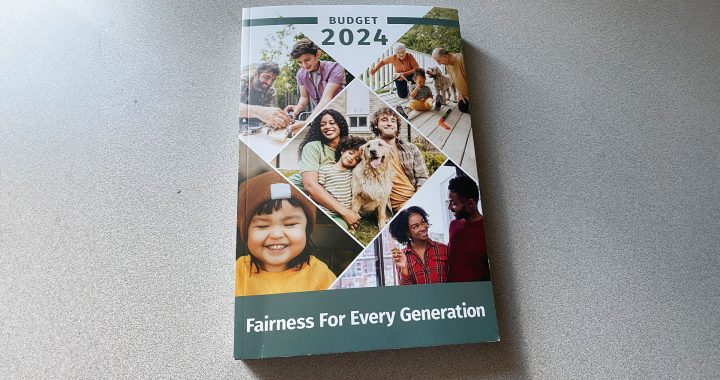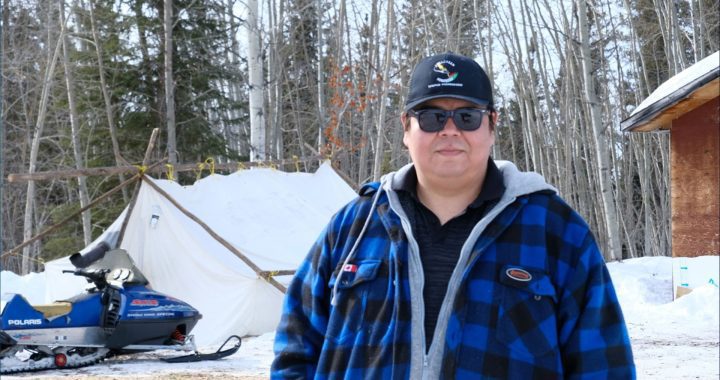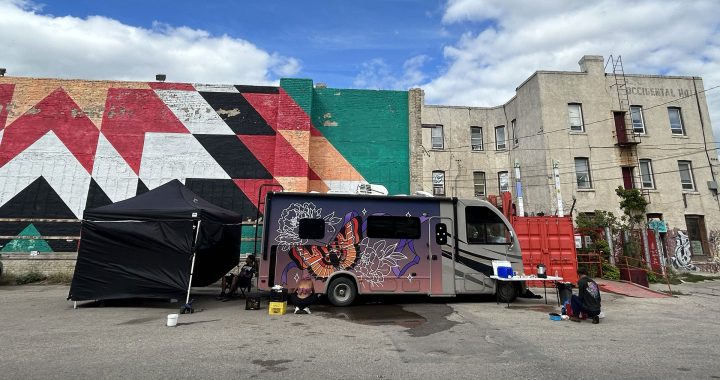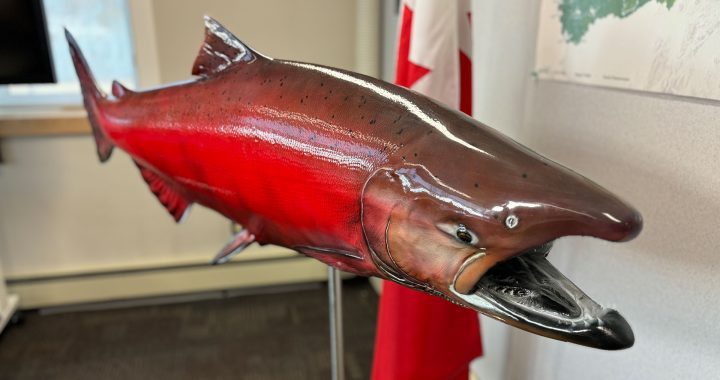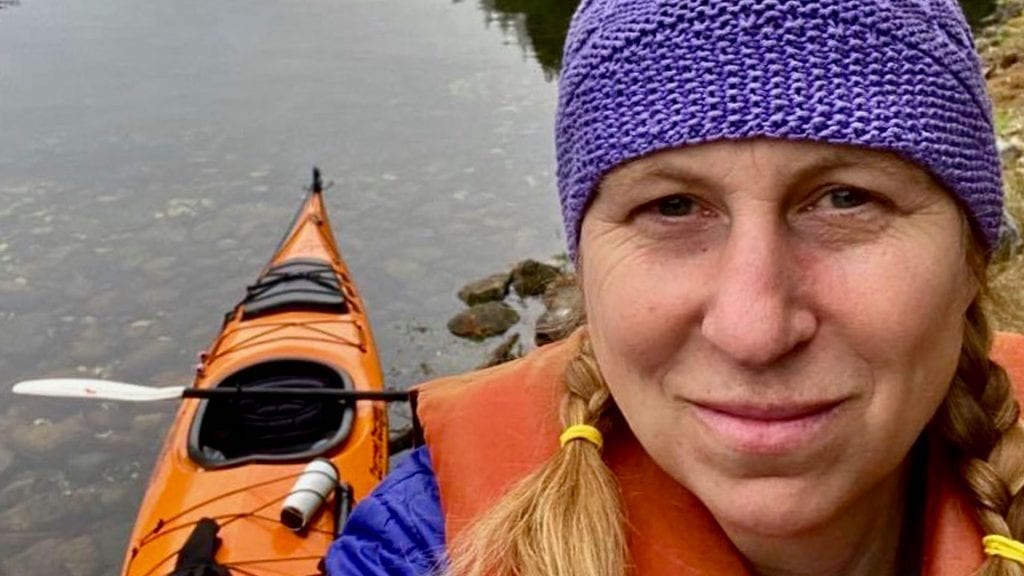
Heather Jansen is a Community Health Nurse for Klahoose First Nation. Photo courtesy: Heather Jansen.
The community nurse in Klahoose First Nation in British Columbia says she wouldn’t offer vaccines to people unless she felt good about it.
“I’m always reading and looking into the vaccines I give. That’s my responsibility as a vaccinator, working in First Nations Community Health,” Heather Jansen says.
Klahoose First Nation is a small, remote community located on Cortes Island in the Discovery Islands archipelago on the coast of B.C.
Klahoose had a cluster of COVID-19 cases, and went into a lockdown from Nov. 26 until Dec. 27. After a lot of organization by front-line emergency staff, the community has since been confirmed all clear of any COVID-19 cases.
The goal is to keep Elders safe, says Jansen.
But it’s not just the Nation’s Elders who are being vaccinated. The First Nations Health Authority (FNHA), First Nations Health Council (FNHC), and First Nations Health Directors Association (FNHDA) are taking a “whole community approach, meaning immunization is being offered to anyone over 18.
“Priority will generally be given to older adults as they are at the greatest risk if they contract the virus,” says a joint statement released Dec. 23.
“However, a series of practical and ethical considerations suggest it is better to send vaccines to the entire adult population of small, remote First Nations communities, rather than only to the Elders.”
James Delorme, former chief of Klahoose, and former board member at B.C. Assembly of First Nations, says he feels relief for the sense of safety the vaccine brings.
“Even though as an urban Klahoose member I won’t be able to get the vaccine until closer to spring 2021,” Delorme says. “I’m grateful for the Klahoose vulnerable population of Elders, Knowledge Keepers and community members at T’oq, Indian Reserve #7 getting vaccinated right away.
“The choice to support remote First Nations gives some hope for healthier outcomes for our people and collectively with Indigenous and vulnerable populations.”
Delorme’s son Julian Francis, 22, is one of the younger adults who was able to access early roll out through the whole community approach.
“I definitely felt much relief after getting our first shot,” says Francis. “I have much less anxiety about going to town or even just going for a walk.
“I do have more hope and I feel good about getting the vaccine as it is a big step in the right direction to keeping the community safe.”
Jansen started her role as community nurse in June 2020, just as the pandemic was taking off in the area. She grew up in Klahoose Territory and moved back from Campbell River, Vancouver Island, for the job.
“I’ve grown up, born and raised in their territory. So when the opportunity came up to work here as a community health nurse, I jumped on it,” says Jansen.
She lives on Read Island and commutes by boat to work on Cortes Island, staying over weeknights, especially in the winter with shorter daylight hours.
Through her role as a nurse, Janson says she recently completed 20 hours of training on how the vaccine is made, organized by the BC Centre for Disease Control, and Public Health Agency of Canada.
The training covered, managing a vaccination program, how vaccines are developed, and also serves to inform nurses on the specific details around COVID-19 vaccines, such as time limits.
She says having knowledge on how the vaccines are made helps her navigate fears and any misinformation around the vaccine and vaccination process.
Facing misconceptions and mistrust

Jansen says she was working in the North Island Hospital Campbell River and District hospital as a pediatric nurse before this role. She’s a mother to five children, and was a midwife in the past.
Throughout her journey and work, Jansen says she has confronted her own fears and misconceptions about vaccinations.
“I’ve overcome my fears and doubts. Over six years as a pediatrics nurse caring for kids with vaccine-preventable illnesses taught me a lot as well,” says Jansen.
One of the biggest challenges in her work is confronting the fears of others she says. Jansen has recently been working with young women or couples wanting to have children who are afraid about the consequences of the vaccine.
“They want to make sure that this isn’t going to be affecting their ability to have children,” she says. “And as an older woman that’s done with my childbearing, I totally got that. If I was young, I would want to know.”
Jansen has heard about fears around the vaccines changing genetic coding, but those ideas are grounded in misunderstandings.
The vaccines are made through genetically modifying [the ‘m’ in mRNA] polymers, but this is not the same as entering the recipient’s genetics, Professor Joel Schwarcz explains.
He is Director of McGill University’s Office for Science and Society.
“While RNA can exit from a cell’s nucleus, it cannot enter it. However, even if it could, there is no way for our genes to be ‘modified,’ since mRNA does not incorporate into DNA,” he says.

Many fears in Indigenous communities stem from historic trauma and violence from the medical care system.
“In First Nations health, you come across a lot of trauma from healthcare that’s been done in really poor ways, or from residential school. Just the way that people have been treated,” Jansen says.
“If medical and nursing students could have seen how clear the trauma was, they would know what a trauma-informed practice needs to address.”
She says there’s a “heaviness” around the COVID-19 shot, but after what has been a long year, even people who were skeptical about other vaccines seem to be lining up.
“People aren’t sure, or just aren’t really able to understand what it is, but they want to be able to hug their grandchildren again.”
Randy Louie had read online stories about still being able to contract the virus, even after the vaccine.
“Honestly I had concerns about the vaccine. I heard many things online about how it isn’t working,” says Louie, a father and tour guide at Klahoose.
“[It] made me nervous because of my family,” he says. “I can go to town and do my shopping and be a carrier, bring it home to my family.”
With two children at home under 18, he was concerned, but after observing and learning more he and his wife vaccinated.
As of Jan. 21, 2021, Indigenous Services Canada is aware of 14,488 confirmed positive COVID-19 in First Nations communities across Canada and 1,427 in B.C.
Ten communities in B.C. were part of the first roll out of vaccines. Access was a key factor in the choices — getting vaccines to communities easily, and quick access to a hospital in case of any reactions, says Jansen.
“I believe the communities were picked due to things that had happened: outbreaks, lockdowns,” says Jansen.
As of Jan. 18, 62 people at Klahoose had been vaccinated according to Jansen.
“We all feel relieved to be on the road to hopefully be closer to having this whole thing be in the past. I am sleeping easier now that the Elders I am walking on this road with are 70 per cent safer from COVID,” says Jansen.
The second round is scheduled for early February she says. At that point, families might begin to visit each other, if public health authorities’ recommendations open to beyond immediate households.
“We are still supposed to stay within our household bubble, but once those recommendations are lifted I would feel comfortable and confident about visiting our elders and family without fear,” says Francis.
COVID-19 has created more worry for Elders to carry as they enter hospital situations. The living needing to travel for medical treatment in larger centres.
“It was good that I got the vaccine shot before I went for my surgery in Victoria,” says Elder Jessie Louie, who had two surgeries in the past three months — one before the community lock down, and a recent one after vaccination.
Louie says she was vaccinated the day after her 68th birthday, and when she is asked about a better year in 2021, she instantly thinks of her community as a whole, “for all of us,” she says.
“[It] was very important to keep our Elders safe from COVID-19 as not many fluent speakers left,” says Louie.





